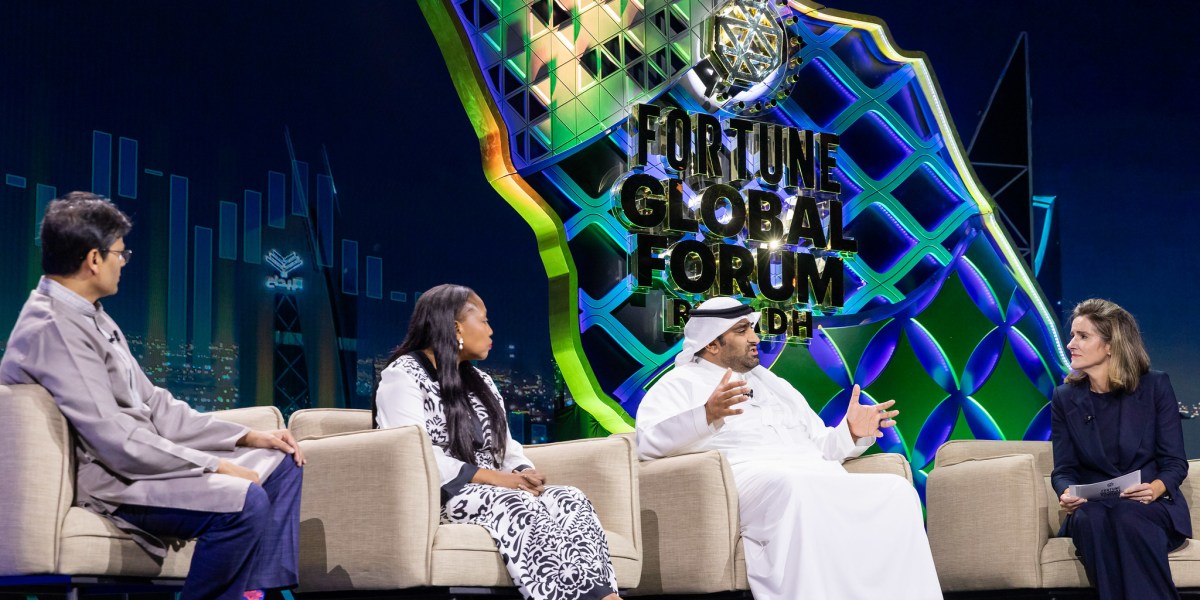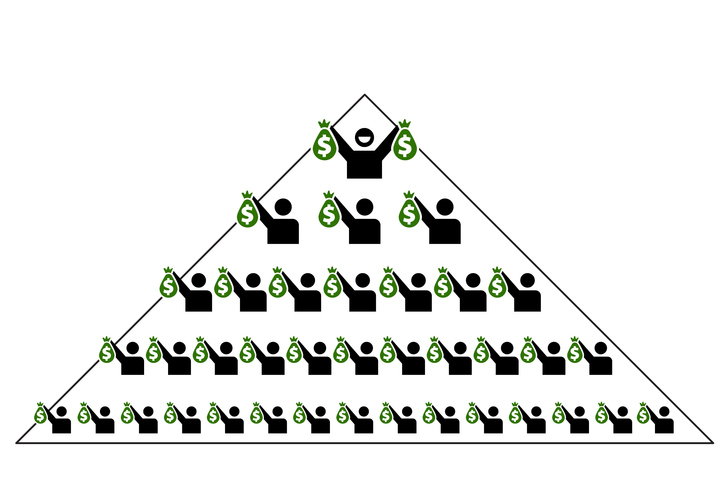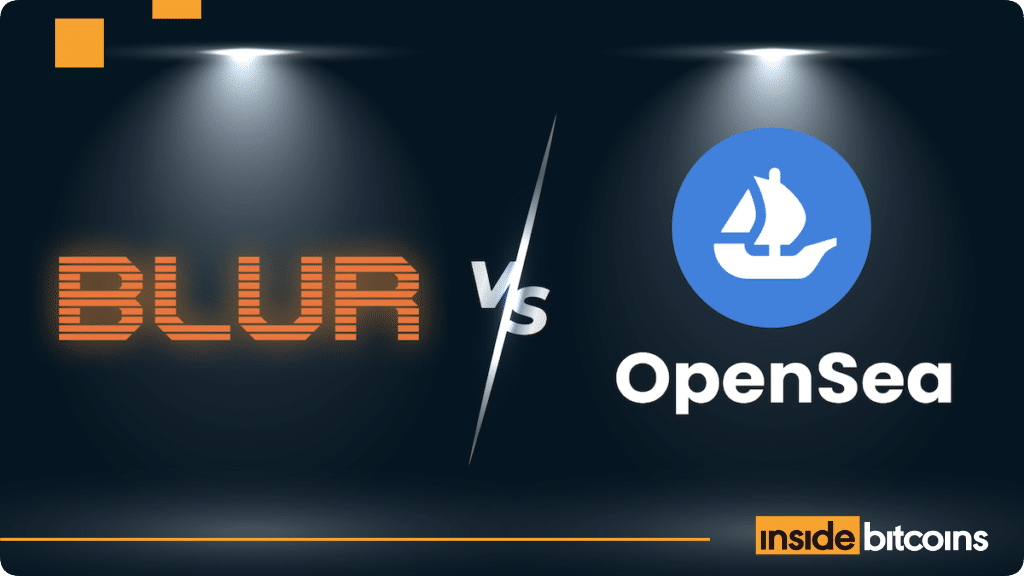In this exclusive ETMarkets PMS Talk interview, Chanda shares his innovative approach with the Ad Astra Fund, a fully AI-powered solution that doesn’t compete with fund managers, but rather seeks to overcome the inherent biases and inefficiencies that often plague traditional investing.
Far from trying to outdo fund managers, the goal is to empower investors with a system that delivers superior, consistent performance by making smarter, data-driven decisions.
With AI increasingly becoming a key player in financial markets, Chanda discusses the future of investing, the intersection of technology and finance, and how Savart’s approach is poised to transform the way we think about long-term wealth creation. Edited Excerpts –
Kshitij Anand: I was going through the fund, and in fact, it has a very interesting concept. Let me drill you on that first, and then we will come to the other parts of the fund. Well, a fund without a fund manager—how does it work? And can you take us through the recent performance for FY25?
Sankarsh Chanda: So, in terms of the fund, I’ll just introduce the concept first. Our fund’s name is the Ad Astra Fund. While it is interesting when we say “a fund without a fund manager,” we do have a fund manager because there are compliance requirements. But the idea is that from the discovery of a security until exit, we would be able to automate research—whether it is quantitative, qualitative, or both.
This is what we have been able to achieve and what we’ve focused on from day one. The idea here is to reduce bias, increase the speed and accuracy of research, and create consistency for clients over time.Whenever we talk about human fund management, there is bias—whether it’s cognitive bias or a rigidity in investment philosophy. For example, “I am a value investor” or “I am a growth investor”—we love putting ourselves into buckets. With Ad Astra, which is powered by the APART AI system, flexibility and agility of the fund are of paramount importance in everything we do.Many times, we’ve come across quant funds or people who do fully automated quantitative research. But what sets us apart is the qualitative aspect—the softer, intuitive parts of investing. Whether it’s corporate governance, sustainability, or other factors that heavily rely on intuition to make decisions—these are the things we’ve been able to automate with a robo-research program.
That is the entire concept of Ad Astra. It’s market cap- and sector-agnostic, and agile.
Kshitij Anand: Good that you mentioned Ad Astra, because I wanted to ask you about it in my next question. In fact, Ad Astra is positioned as the world’s first fully 100% AI-driven investment fund. What inspired this bold move, and how does it differentiate itself from the traditional and quant-driven funds that are available in the market right now?
Sankarsh Chanda: So, I’ll give you a simple example. We always talk about annual reports—ki annual report padna chahiye. It’s really important, and you get a lot of information out of it. But at the end of the day, there are two aspects to annual reports. One, how many historical annual reports are you actually reading, and with what rigor are you reading them? And two, you should always read annual reports with a pinch of salt. Because, again, who is creating these annual reports? It’s the companies themselves.
Now, if it were my company—or any promoter’s, for that matter—we wouldn’t want to write negative things about ourselves. Even if negative developments are mentioned, they’ll be sugar-coated.
Let me give you a specific example. Say in 2018, a company said, hum 7 saal mein ya 6 saal mein we will become a carbon-neutral company. Now, assume you’re a very diligent investor and you noted that in the 2018 report—you thought, achha, yeh toh sach mein great idea hai. But by 2024 or 2025, there’s no mention of that claim at all in the annual report.
So, the first thing is, you’ve read six or seven annual reports. The second is that you’ve created a mental model or a checklist where you’re able to connect different dots across different pages, memorize or record it properly, and then actually follow up on it.
And the third point is, we as humans are usually focused on what’s written. But what about the things that are not written?
These are the minute qualitative aspects that our system is able to pick up and highlight—what we should focus on, how to interpret it, and what impact it could have on an investment. This is just one small example of the depth to which the system can go.
Another example is the speed of research. A single research analyst or fund manager might be able to cover 100 companies a year—maybe 200, 300, or even 500 if it’s a superhuman team. But our system is capable of analyzing thousands of companies in just a few seconds.
So, the speed and the scale of data being understood and interpreted is off the charts.
Now, I would like to top it up with one last point. I know—and we all know—especially in this current AI frenzy, what the limitations are and what possibilities AI brings in. We never claim, nor will we ever claim, that AI is perfect or that our system is perfect. Everything is subject to mistakes.
But when it comes to human fund management, we feel the bar is set so low that our system crossed it four years ago. So, we are not in this race just because AI has suddenly become hot in the last two years and we thought, haan, AI hot ho gaya toh hum bhi APART AI bana dete hain.
Since our inception, we have been genuinely obsessed with automated research and automated fund management—and we have the track record to prove it.
Kshitij Anand: And in fact, now that we’ve talked about APART AI and how it leverages various fields—be it social media, research reports, independent third-party reports, or annual statements—how does it really identify high-potential stocks? Yes, I’m sure you’re not going to reveal the secret sauce or the coding mechanics, but if you could give an overview, that would be really helpful.
Sankarsh Chanda: So, firstly, there’s always a misconception when we talk about our systems and process—that there is a single holy grail algorithm, some kind of very proprietary secret, a single beautiful algorithm. That’s not the case. This system is a collection and combination of multiple smaller systems and algorithms that come together as a culmination.
For example, things like seasonality, cyclicality, macroeconomic studies—though “macroeconomic” itself is a very broad term—are broken down into individual indicators. For each of those indicators, there are algorithms focused on analyzing them specifically.
Now, what truly sets our system apart is the thought process behind it. For instance, when we talk about sectoral and industrial classifications, everyone usually goes with the norm. Haan theek hai, there’s a globally accepted industrial classification—this is a cluster, this is a cohort—and people just follow that.
Second, people rely on thumb rules like a company should have an ROCE of 15%, debt-to-equity should be less than 2, revenue growth should be more than 10%, etc. We’re all used to our own biases and rules—many of which we don’t fully understand. Our system questions those biases, questions those rules, and tries to find out whether a particular parameter is actually important.
This questioning is done through the quant and IRIS systems—quant being the quantitative engine, and IRIS the qualitative one. Every single idea we have is tested through this questioning framework.
Also, we love to make blanket statements when it comes to investing—like debt kum hi hona chahiye. But sometimes, not having debt is actually a problem. Sometimes, having a lot of debt might be great for a certain kind of business. So, it’s about identifying which two or three businesses are actually similar to each other in reality, not just based on conventional classifications.
Kshitij Anand: In fact, you did mention that you started APART back in 2019 and have been leveraging the technology since then—well before the recent surge in AI-driven finance that we’re witnessing now. What key learnings from the past six years have contributed to APART AI’s success? And as we all know, systems are constantly evolving, so have there been any recent updates you’ve made? How has the journey unfolded over these six years, especially given the new technological advancements during this time?
Sankarsh Chanda: 100%, I mean, there’s been a tremendous change. Six years is a long time in itself, and the kind of changes we’ve seen have been game-changing. If you’d asked us two or three years ago what we were working on, and compared that to what we’re working on today—it would be poles apart.
Of course, the vision has remained the same. The direction and broad focus on technology have remained consistent. But the pace at which things have evolved is incredibly exciting. When we started, we literally began with Excel sheets. That’s how we got going. In my opinion, Excel is the start and end of all businesses. That’s where we began.
Automation and AI weren’t an obsession at the time. These are just tools—means to an end. It was never like, nahi bhai, ab toh ML daalna hi hai—that we had to force machine learning into the process just to be trendy. That was never the idea.
We faced certain fundamental problems—like the biases I mentioned earlier. Why is someone saying something? Why does a particular fund underperform or outperform? What are market cycles, and how do they move? Think about how Howard Marks talks extensively about cycles—there’s so much wisdom out there already. But putting that into practice can be overwhelming. There’s just so much to learn and apply.
So, our first obsession became data collection—how do we gather eclectic, comprehensive data from different sources? Theek hai, everyone has access to a terminal, everyone has access to financial statements. A lot of data is already in the public domain and largely democratized.
Once we had enough data from diverse sources, we started getting truly obsessed. Information is very different from insight. For example, we never talk about target prices—yeh hamara target price hai, iss time pe yeh stock idhar rahega—we simply don’t have those kinds of conversations. We’re not in the business of making predictions, because we genuinely believe it’s foolish to try and predict the future.
We’re in the business of assessment. Where do we stand today? Which part of the cycle might we be in? How did markets behave in similar historical contexts? Interpreting that historical data and deriving meaningful insights from it is what really matters at the end of the day.
Now, insight is not saying “invest in this stock today and it will double in two years.” That’s not insight. Real insight could be identifying the key growth triggers, or spotting something that might be missing—like the example I gave earlier about carbon neutrality. What are those subtle but critical points, those nodes in the data, that others may be overlooking? That’s what we aim to capture.
Initially, we had a lot of manual monitoring and supervision. The system would undergo major overhauls from time to time. But over the years, we’ve lived through multiple regime changes—the COVID-driven market crash, geopolitical disruptions, extended sideways phases, and then the bull run of the last few years. The system has adapted and learned from all these market conditions, becoming significantly more robust in the process.
Five to six years is not a short span, and during this time, the outperformance we’ve delivered through the APART AI portfolio has been quite remarkable. I realized I missed this when you asked earlier—but on a weighted average basis, our portfolios have delivered returns close to double the benchmark. That’s with a blended portfolio of equity and debt. Our equity-only portfolios have outperformed the Nifty 50 benchmark by almost 2.5 times.
Achieving that kind of performance required multiple shifts—in our thought process, technology, and systems. We’ve constantly reimagined and upgraded. And even today, if someone asks me, “What’s the vision for APART, where do you stand today?”—I’d say we’ve maybe achieved just 1% of what we truly envision.
So you can imagine, with just that small fraction of optimization, if we’ve been able to reach this far, then the road ahead is full of immense possibilities.
Kshitij Anand: Let me get your viewpoint on APART AI. In fact, you mentioned that it incorporates both qualitative research automation alongside quantitative models. How does it assess non-numeric factors like management quality and corporate governance? I think you mentioned that IRIS is the model used to incorporate those numbers. If you could throw more light on that.
Sankarsh Chanda: Perfect. I’ll give a simpler explanation without delving into the technical aspects. It’s very similar to how you interact with ChatGPTs and the LLMs powering them. You start with simple questions, based on parameters or factors that you initially think are important. Over time, the system builds capabilities to create its own parameters—that’s honestly the trickiest part: the system generating its own parameters, showing sources, providing examples, and getting trained accordingly.
For instance, how does a research analyst figure out the moat of a business? Is there a network effect? Do they possess certain intellectual property that’s important? Are there high entry barriers in the business? Is the switching cost high? So first, you train the system on what a moat is, the different kinds of moats that exist, and then whether it translates into any value addition to the business—like share price appreciation over time.
This kind of fundamental training happens at a deep level. There are parameters, sub-parameters, and parameter ranges within those. There are multiple layers of detail. The more questions we give the system, the more detail we provide, and the better we train it with real-time examples of how things have played out in the market—that’s broadly how we train it.
I’m intentionally not getting into the technical parts…
Kshitij Anand: You’ve given a good overview—I think that’s more than enough. But let’s also talk a little about the future. What challenges do you foresee for AI-driven funds in India, especially with the regulatory framework still evolving around AI in the financial services domain?
Sankarsh Chanda: Number one, even in our PMS, while the entire process—from research and discovery to exit—is automated and comes with a rationale and explanation to a great extent, the final trade execution still requires human intervention at this point. Of course, technologies for automated execution are already available, and we don’t need to develop much in that area. But currently, there are restrictions on what we can and cannot do. So, the first challenge is that there are limitations on how much we can automate.
Second, I would say we’ve come a long way in terms of automating research. Initially, with robo-advisory models, only the advice was automated—research bias still remained. We wanted to fix that, and we’ve made good progress. But the next big step is understanding our data sources better and controlling biases at a much more fundamental level. There are still a lot of technical aspects to be figured out.
As I mentioned earlier, while the systems are not perfect yet, they are already outperforming what an average human fund manager can achieve. That gives us a lot of comfort.
And third, regarding compliance and regulation—SEBI is catching up quickly. In fact, SEBI itself is using AI tools, and we’ve seen articles in ET and elsewhere talking about this. So, it’s only a matter of time before this approach is more widely embraced.
I don’t think the question anymore is whether AI will be used or not—it’s about how much you want to use it and how you choose to use it. We’re not fighting against human fund managers. We’re fighting against underperformance. We’re fighting against narratives and storytelling—ki yeh aisa theme hai, hum aise karege—that kind of story.
(Disclaimer: Recommendations, suggestions, views, and opinions given by experts are their own. These do not represent the views of the Economic Times)
























